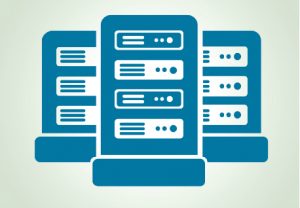In the early days of healthcare IT, clinical documentation was done on mainframe-connected terminals, and later on Windows-based clients running on individual PCs. About the only data that was shared from these platforms was to billing services. Competing systems were built on different platforms with different programming languages; all by humans who have different ideas on what these systems should focus on. As healthcare IT has evolved, the number and scope of connected systems has exploded. Today’s hospitals typically have more than one hundred systems that need to communicate with each other, not to mention the ever-increasing number of devices within the healthcare setting, and the addition of consumer based devices like Fitbits.
This all means that healthcare IT systems need to become more adept at exchanging data between lots of devices and other systems. This concept is called clinical interoperability.
So what is interoperability and why is it important in healthcare?
Interoperability is the ability for healthcare technology systems and devices to exchange, interpret, and store data using common standards.
In order for two systems to be considered interoperable, they need to be able to exchange data and present it in a way that is useful to clinicians. Interoperability has been pushed forward by the Office of the National Coordinator for Health Information Technology (ONC). In 2014, the ONC released a 10-year plan to achieve interoperability in the US by 2024. The goal is better utilization of clinical data, improved workflows, lower health costs, and improved patient wellness. The OCC has recognized the need to more quickly overcome the fragmentation of various healthcare technologies.
Levels Of Interoperability
The Healthcare Information and Management System Society (HIMSS) has come up with three levels to define what qualifies as interoperability:
Foundational interoperability is the lowest level of operation, requiring data exchange from one system or device to another without an expectation that the data is interpreted. An example might be the use of a patient portal to send a PDF document that has patient history information. The recipient of the PDF document would need to open it and manually enter that data into an electronic medical record system.
Structural interoperability is the next level of operation requires the data to follow some structure or format, that there is uniform movement of the data, and that the data is stored somewhere in the receiving system. The data also needs to be preserved in its original form. Examples of structural interoperability are HL7 interfaces and the transmission of patient data from connected devices like Fitbits. Patient portals can be configured to allow patients to upload data from these devices. Another example is data from devices in physicians offices- like blood pressure monitors and glucose readers.
Semantic interoperability is the highest level of interoperability, requiring interpretation and use of the data to achieve outcomes such as improved patient care, improved patient safety, and the ability of clinicians to make decisions on that data. Examples of semantic interoperability are Health Information Exchanges and data collection methods for population health. Population health technology makes use of risk scores, which are calculations of many clinical data points to predict, for example how likely a patient is to be readmitted to a hospital in the near future. A clinical case manager can work from a report of risk scores to personally reach out to high risk patients with intervention activities.
Why Is Interoperability Important In Healthcare?
The clinical environment is inherently complex, with disparate practices in each setting. This lends to technologies being each developed with their own priorities. Interoperability should remove complexity or manual steps on the part of people using the technology. It has to bring useful information closer to the point where that information is used to deliver care or make decisions. Otherwise, interoperability is just another buzzword.
Interoperability Example
A good interoperability example is the development of infusion pump interfaces. An infusion pump is a medical device that is programmed to deliver fluids or medications at calculated rates through an IV to a patient. The medication formula is programmed into the pump to ensure the correct dosage and duration of the med formula. The calculations used to be written on a printed order, then programmed into the device by a nurse. There are now interfaces that transmit the medication calculations from a hospital EHR system to the pump. The process includes safety checks that require human confirmation of the calculation before the medication is started.
EHR Interoperability
Interoperability has gained a lot of public attention with the rise of two high profile national health information exchanges. Carequality and CommonWell both operate HIEs that aggressively lobby the major EHR vendors to get them on board with information sharing. However, with the number of EHR vendors competing against each other, the healthcare IT community has a long way to go toward consistent and useful exchange of healthcare information.

Read More
Healthcare Interoperability Challenges
In some regards healthcare technology has been interoperable for quite some time. We’ve had HL7 interfaces exchanging data among many different types of systems for a few decades. However, clinical interoperability in today’s context proposes that electronic health records systems share complete clinical data among each other irrespective of vendor platform or the patient’s healthcare organization. I’ve heard some non-technical folks express surprise that their office visits from 20 years ago in Ohio don’t just show up automatically for their primary care provider in California. For that to happen, there would likely need to be a much more intrusive use of patient data than what most people are willing to tolerate. This means that the main challenges to interoperability is not technical, but societal. To what degree we actually want data to be shared very much determines the direction of the technology.
Where Is Interoperability Headed?
For the short and medium-term future, I think we can expect to see a lot more consumer driven healthcare, where patients expect more connectivity from EMRs to devices, apps, and platforms that are not part of the EMR platform. Also, we can expect to see healthcare IT departments work to make better use of data from multiple sources. Devices, population health data, and clinical charting will all be used together with greater efficiency to (hopefully) impact patient outcomes.
Next Up: Understanding Interoperability depends on first knowing how healthcare IT systems are built into various environments. Learn about that in this post on healthcare IT systems architecture.

Read More


